The Cullinan Diamond – The art of Mother Nature
In a few day’s time we will look at the British Regalia – the Crown Jewels that will be used in the coronation of King Charles III.
The descriptions of the Crown Jewels make reference to various Cullinan diamonds – named Cullinan I, II, III, IV etc up to IX. Some of these are really large diamonds, so I thought it would be interesting to look at the history of the original stone!
The Cullinan Diamond is the largest gem-quality rough diamond ever found, weighing 3,106 carats (621.20 g), discovered at the Premier No.2 mine in Cullinan, South Africa, on 26 January 1905. Isn’t it a whopper!
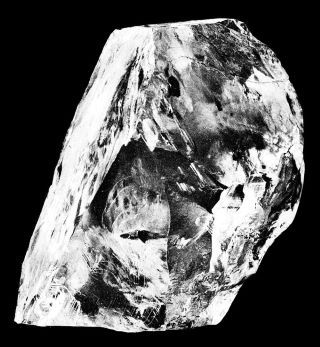
The Cullinan is estimated to have formed over 500 kilometres deep in the Earth's mantle.
In simple terms, diamonds are formed over millions of years when pure carbon deposits deep within the earth are subject to high temperature and pressure. This makes the carbon atoms form into a repetitive tetrahedron structure which makes diamonds the hardest gemstone on earth. (Graphite in a pencil is also pure carbon, but the atoms are arranged in horizontal hexagon shaped layers which slide off when pressure is applied ie. as easily as when you press on the pencil to write something! Isn’t Mother Nature fascinating!)
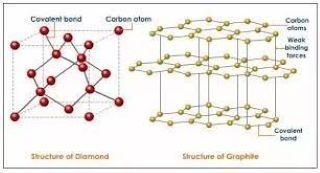
Due to volcanic movements in the earth’s crust it is estimated that the Cullinan came close to the surface about 1.8 billion years ago. It was found 5.5 metres (18 ft) below the surface at Premier Mine in Cullinan, Transvaal Colony, South Africa, by Frederick Wells, the surface manager at the mine, on 26 January 1905. It was approximately 10.1 centimetres (4.0 in) long, 6.35 centimetres (2.50 in) wide, 5.9 centimetres (2.3 in) deep, and weighed 3,106 carats (621.2 grams). 1
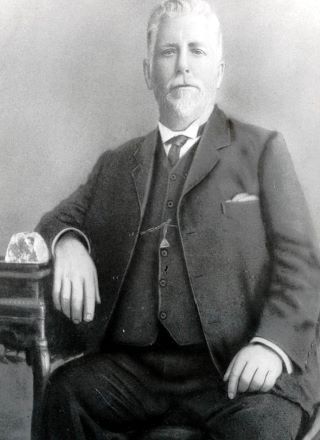
It was named after Thomas Cullinan, the owner of the mine, after initially being thought to be just a large piece of glass!
Initially, the Cullinan was put on public display at the Standard Bank in Johannesburg, where it was seen by an estimated 8,000–9,000 visitors. In April 1905, it was transported to London to hopefully be sold. 1
Its transportation to London is a story in itself! Due to its immense value, detectives were assigned to a steamboat that was rumoured to be carrying the stone, and a parcel was ceremoniously locked in the captain's safe and guarded on the entire journey. It was a diversionary tactic – the stone on that ship was fake, intended to attract those who would be interested in stealing it. Instead, the Cullinan was sent to the United Kingdom in a plain box via registered post! 1 Can you believe it!
On arriving in London, it was conveyed to Buckingham Palace for inspection by King Edward VII. Although it drew considerable interest from potential buyers, Cullinan went unsold for two years.
The Transvaal Prime Minister, Louis Botha, then suggested buying the diamond for Edward VII as "a token of the loyalty and attachment of the people of the Transvaal to His Majesty's throne and person." In August 1907, a vote was held in the Legislative Council on the Cullinan's fate, and a motion authorising the purchase was carried by 42 votes in favour to 19 against. 1
The diamond was presented to the king at Sandringham House on 9 November 1907 – his sixty-sixth birthday – in the presence of a large party of guests, including the Queen of Sweden, and the Queen of Spain. The king accepted the gift "for myself and my successors" and announced that he would ensure "this great and unique diamond be kept and preserved among the historic jewels which form the heirlooms of the Crown.” 1
The king chose Joseph Asscher & Co of Amsterdam to cleave and polish the rough stone into brilliant gems of various cuts and sizes. Abraham Asscher collected it from the Colonial Office in London on 23 January 1908. He returned to the Netherlands by train and ferry with the diamond in his coat pocket! Meanwhile, to much fanfare, a Royal Navy ship carried an empty box across the North Sea, again throwing off potential thieves. Even the captain was unaware that his "precious" cargo was a decoy. 1
On 10 February 1908, the rough stone was split in half by Joseph Asscher at his diamond-cutting factory in Amsterdam.
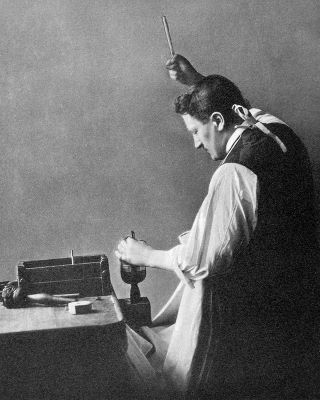
The Cullinan produced 9 major stones of 1,055.89 carats (211.178 g) in total, plus 96 minor brilliants and some unpolished fragments weighing 19.5 carats (3.90 g). 1 The buying, selling and gifting of all the stones in the ensuing years is quite complex, which you can read about here if you wish.
This same link gives a great deal of detail about each of the main individual stones, I to IX, as well, if you are interested.
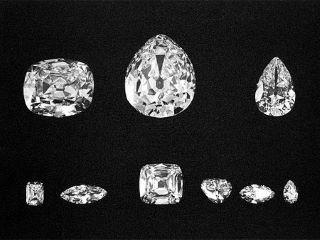
Essentially, the main diamonds that will be used in the Coronation on 6th of May 2023 have ended up as follows:
Cullinan I – also called the Great Star of Africa is set in the Sceptre of the Cross. We will see this in the next Coronation post.
Cullinan II – also called the Second Star of Africa is set in the front of the Imperial State Crown. We will see this in the next Coronation post.
Cullinan III and IV – both also called the Lesser Star of Africa, have been incorporated into various Royal items, but most recently, were worn together by both Mary of Teck and Queen Elizabeth as a brooch. These are both being incorporated into the modifications of Mary’s Crown which will be used to crown Camilla, the Queen Consort.
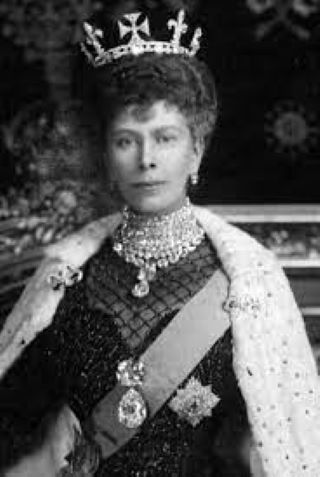
As I understand it, apart from Cullinan I and II, which form part of the Crown Jewels of the United Kingdom, (and are owned by the people of the Commonwealth), the other seven other major diamonds, (III to IX), weighing a total of 208.29 carats (41.66 g), were privately owned by Elizabeth II, who inherited them from her grandmother, Queen Mary, in 1953. 1
I guess they are now owned by King Charles…………..
Late Mail
It is with much delight that we welcome Elsa in Massachusetts - our newest subscriber to the AnArt4Life blog.
Footnote
- With thanks to Wikipedia
